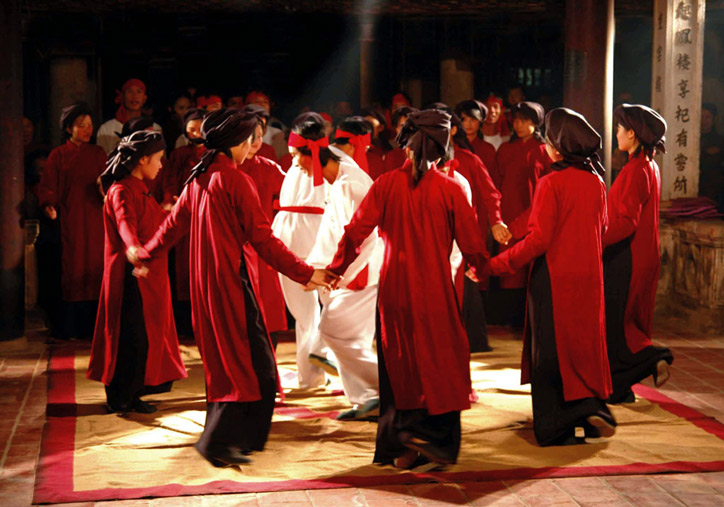Hát Xoan in Phú Thọ is a unique form of folk art closely associated with the cultural life and beliefs of the local people, especially during the festive season at the beginning of the year. It is recognized as an intangible cultural heritage of humanity by UNESCO.
1. Origins and Significance
Origins: Hát Xoan is believed to have originated during the Hùng Vương era, more than 2,000 years ago. Initially, Hát Xoan was performed in spring to welcome the new year and pray for a prosperous harvest.
Significance: Hát Xoan serves both ceremonial and entertainment purposes, reflecting respect for ancestors and deities while also invoking luck, health, and peace for the community.
2. Types of Hát Xoan
Hát Xoan encompasses various forms, the most common being:
Quả cách: Songs that express wishes for a bountiful harvest and a peaceful life.
Hò nhạc and Gõ đệm: Call-and-response songs between men and women, characterized by lively rhythms.
Thờ múa hát: Dance-singing performances conducted in a worship space with solemn rituals.
3. Rituals and Performances of Hát Xoan
Hát Xoan Festivals: Primarily held at the beginning of spring in village temples across Phú Thọ, especially in sacred sites like Đình Hùng Lô, Đình Thét, and Đình Phú Đức.
Hát Xoan Performances: Artists dress in traditional attire, singing and dancing in rhythm with drums and gongs, combining soft and graceful movements.
4. Preservation and Development
Thanks to conservation efforts, Hát Xoan is still passed down and promoted through local festivals and cultural education programs. Artists in Phú Thọ also teach Hát Xoan to younger generations to preserve and develop this unique cultural heritage.
Hát Xoan is not only a cultural heritage of Phú Thọ but also a pride of Vietnamese folk culture, intertwined with the history and spirituality of its people.



